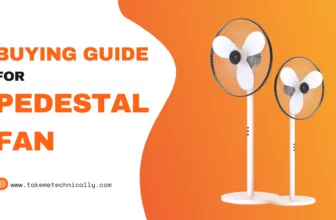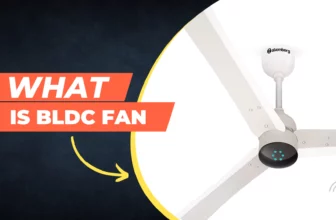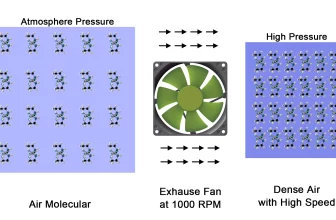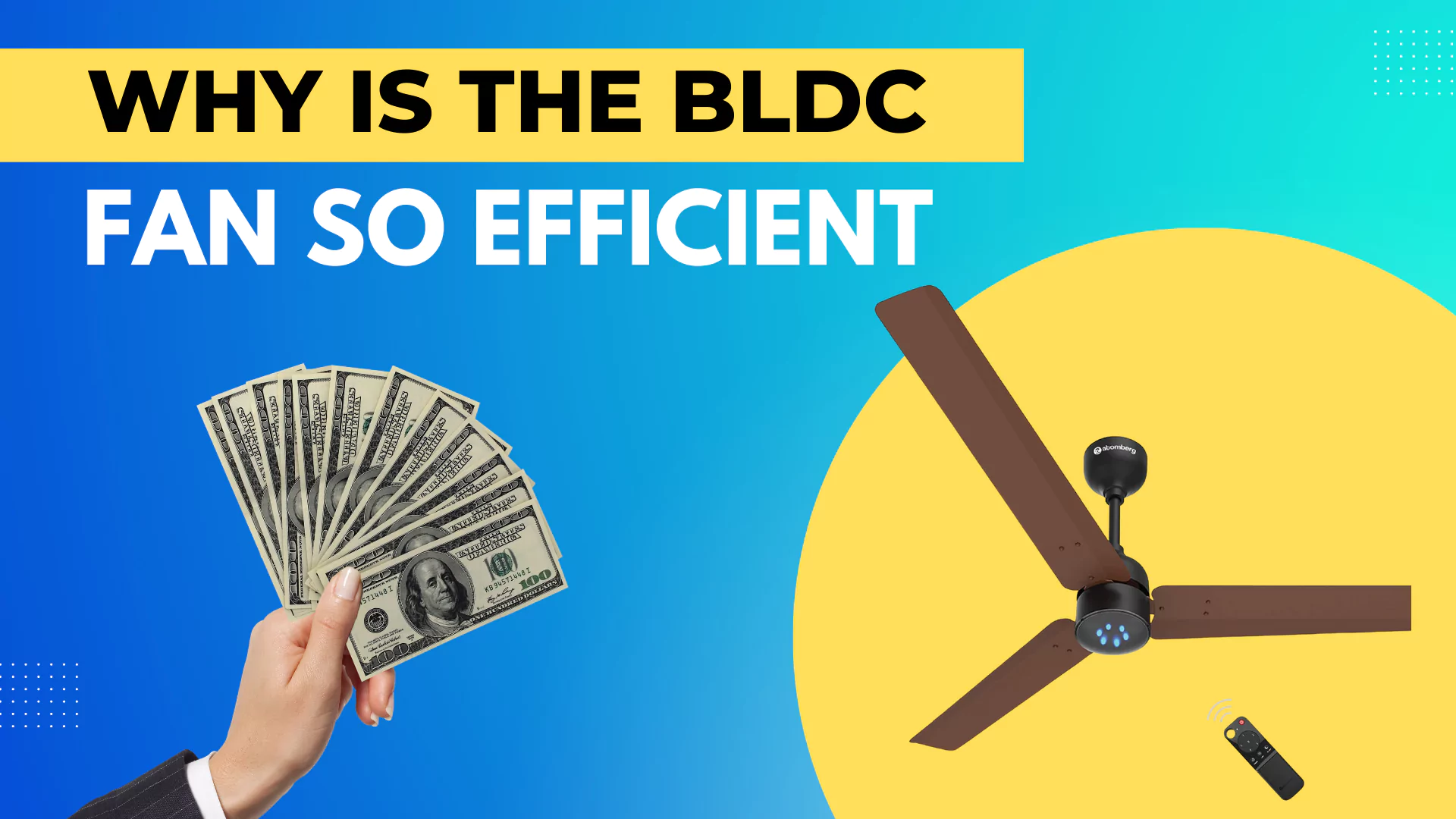
If you know what a BLDC fan is, you may know that BLDC fans are so energy efficient and faster than regular fans. Except in Antarctica, there would be no homes without ceiling fans. It is another great invention of the 19th century. The BLDC stands for brushless direct current,” and its idea of saving energy is that BLDC fan technology doesn’t use brushes,
These BLDC fans use a BLDC motor, so we called them BLDC ceiling fans.
As a result, it reduces power consumption by 65%. These fans have thick copper cables to ensure a longer lifespan and less noise. These BLDC fans never overheat. Let’s go over all the factors and comparisons with regular fans, along with their benefits and drawbacks, below.
Power Efficient BLDC Fans
The BLDC fan uses the BLDC motor, which is a brushless motor, so it uses its maximum amount of provided electricity for its operation compared to a normal induction motor fan. Additionally, BLDC motors contain permanent magnets rather than the electromagnets used in induction motors.
Saving is the art of earning. And over the years, we have been growing towards sustainability. BLDC may be a luxury for most Indians. Still, after a certain time, everyone will use them because BLDC fans are much more energy efficient than LED bulbs. (Hardly any Indian household uses a 100-watt yellow bulb because they switched to LED bulbs.)
Working Mechanism of a BLDC Fan
BLDC (brushless direct current) motor fans are electric motors that use permanent magnets in the rotor to create a rotating magnetic field. The surrounding stator has copper wire windings that carry electrical current, creating its magnetic field. When the rotor rotates, its magnetic field interacts with the magnetic field created by the stator, which causes the rotor to turn. This movement is what produces the Fan’s airflow.
The rotor and stator are designed with north and south polarities in a specific arrangement to ensure that the magnetic fields interact correctly. This means that the north pole of the rotor should always face the south pole of the stator and vice versa. This polarity arrangement allows the magnetic forces to work together to produce the desired movement.
To power, the BLDC motor, an SMPS (switching mode power supply) is required. The SMPS is responsible for converting the AC (alternating current) supply from the wall outlet into the DC (direct current) supply required by the motor. It uses micro-conductors to receive input signals and control the power output to the motor. This allows the motor to be operated remotely with precision control.
BLDC motor fans are commonly used in applications where high efficiency, low noise, and long-lasting operation are required. They are commonly used in household appliances such as air conditioners, refrigerators, and ceiling fans, as well as in automotive applications such as electric cars and hybrid vehicles.
Almost 25% of the home electricity bill is generated by your ceiling fans. But if you use the BLDC fan, that will be so energy efficient. Now you understand why a BLDC fan is so efficient.
The pros of a BLDC Fan
- Lower electricity use, saving an estimated 65% of energy.
- Better and longer inverter backup.
- Improved reliability and quality.
- Super silent operation.
- Improved toughness and longevity.
- No overheating while high temperatures.
- You can use them with a remote due to next-generation technology.
- They provide full comfort as you can set a timer and different modes like sleep mode etc.
The Cons of a BLDC Fan
- It is so expensive. (tiple price of a regular ceiling fan)
- Since it is a new technology, only a few experienced technicians repair it.
A quick comparison of BLDC fans and Normal Fan
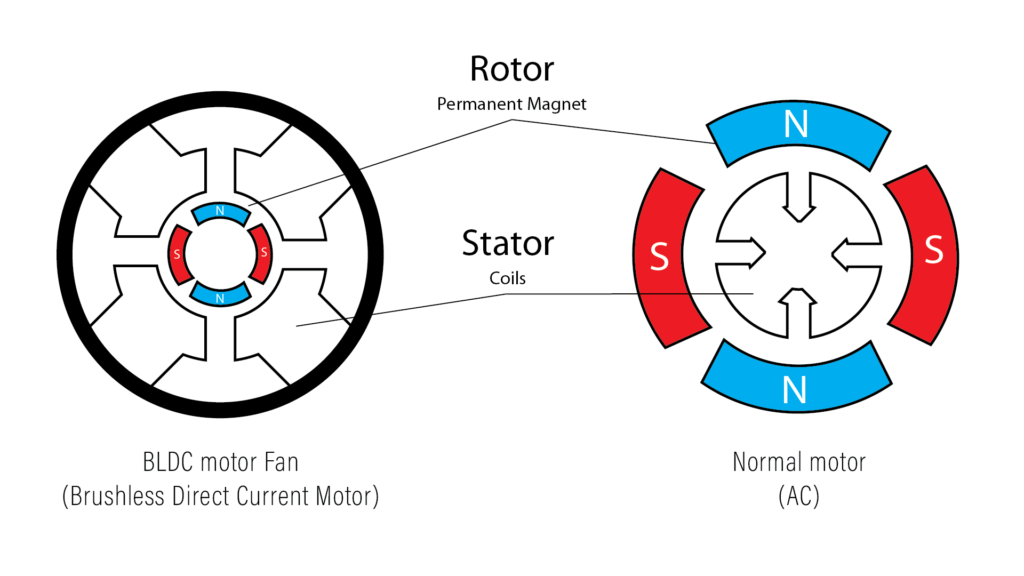
| Features | BLDC Fan | Normal Fan |
| Power consumption | 30 to 40 watts | 65 to 80 watts |
| Speed | High speed than normal fans | High-speed |
| Energy efficient | Yes | No |
| Effective power usage | 90% effective | 75% effective |
| Noise | Lowest noise | Noisy |
| Inverter friendly | Yes | No |
| warranty | 3 to 5 years | 3 to 5 years |
| Price | Start from Rs 2500 to 15000 | Start from 500 to 5000 |
also, read full BLDC fans and Normal Fan.
Why are BLDC fans superior to standard ceiling fans?
Because it outperforms traditional fans in terms of technology, electricity consumption, noise reduction, efficiency, lifespan, and a number of other factors. You can clearly see the differences between the two in the following thorough comparison.
Why do you prefer a BLDC fan over a normal ceiling fan?
Though a BLDC fan is expensive, you can still buy this next-generation technology of a BLDC motor fan. Let’s look at why, as well as the calculation of your BLDC fan savings.
A BLDC fan consumes 35 watts, while a standard fan consumes 75 watts, so a standard ceiling fan consumes 40 watts more than a BLDC fan. Let’s try to figure out the cost.
If we use a fan for almost 8 hours per day (it may vary the period) for a whole year (365 days), let’s assume the residential power consumption rate is Rs 9 per unit (Rs 9 per unit in Madhya Pradesh).
Note: You can calculate your state’s charges per unit.
Let’s calculate the whole year consumed units.
A typical ceiling fan uses about 75 watts, so 0.075*8*365 = 219 units of total energy per year. Now calculate it by unit price: 219*9 = 1971 rupees.
Now use the same calculator for a BLDC fan. A BLDC ceiling fan consumes approximately 35-40 watts. Still, we will calculate it at 40 watts, resulting in 0.04*8*365 = 116.6 units of total energy consumed over the year. So if one goes to calculate the whole year’s electricity bill, 116.6*9 = 1049.4 rupees.
Now it’s clearly showing that if we minus both the bills, 1971-1049.4 = -921.6 rupees. So if you buy a BLDS fan, you will save half its amount. You can cover the BLDC fan price for almost two consecutive years.
Electricity Duty of Low Tension Consumer (regular home usage unit price)
| Consumer Category | Consumed Electricity (In Units) | Unit Rate |
| Domestic Consumer | Under 100 units above 100 units | Rs 9 Rs 12 |
| Non-Domestic Consumer | Upto 50 UnitsAbove 50 Units | Rs 9 Rs 15 |
| Industry | Consumed Units | Rs 9 |
| Stone Crusher (Stone aggregates- Gitti, Gitta, Gajri) | Consumed Units | Rs 9 |
| Mines | Consumed Units | Rs 40 |
| For any other class not included under Sr.No.1 to 5 | Consumed Units | Rs 12 |
*Industry includes Power-Looms, Flour Mills, Oil Expeller, Threshers, and similar other machinery used for agriculture*
Does a BLDC fan need a regulator?
No, a BLDC fan does not require a regulator because it is already a complete fan that can be controlled via remote or mobile application. Most smart fans that are BLDC fans are IOT enabled, so you don’t need a BLDC fan to run a run via a regulator.





